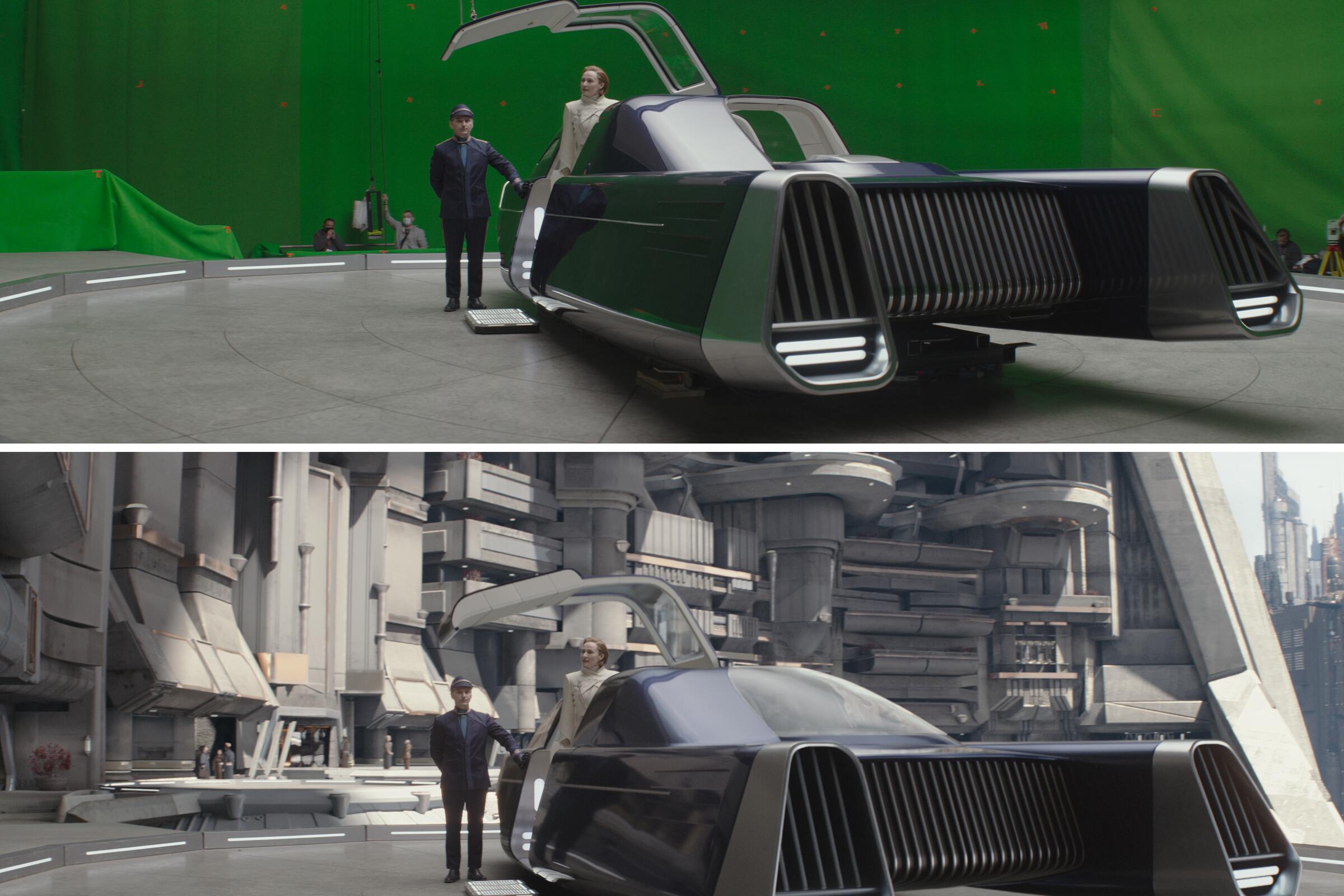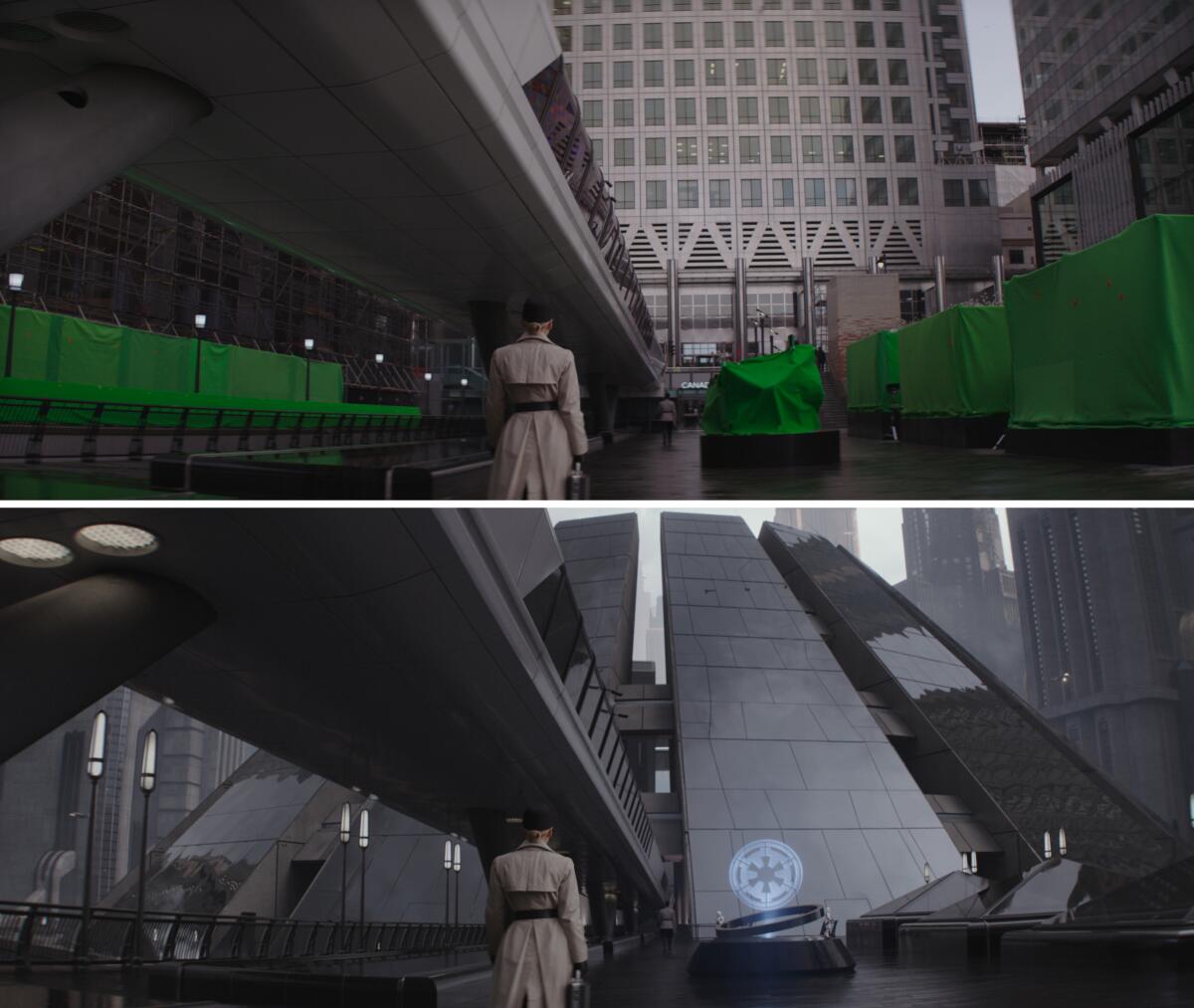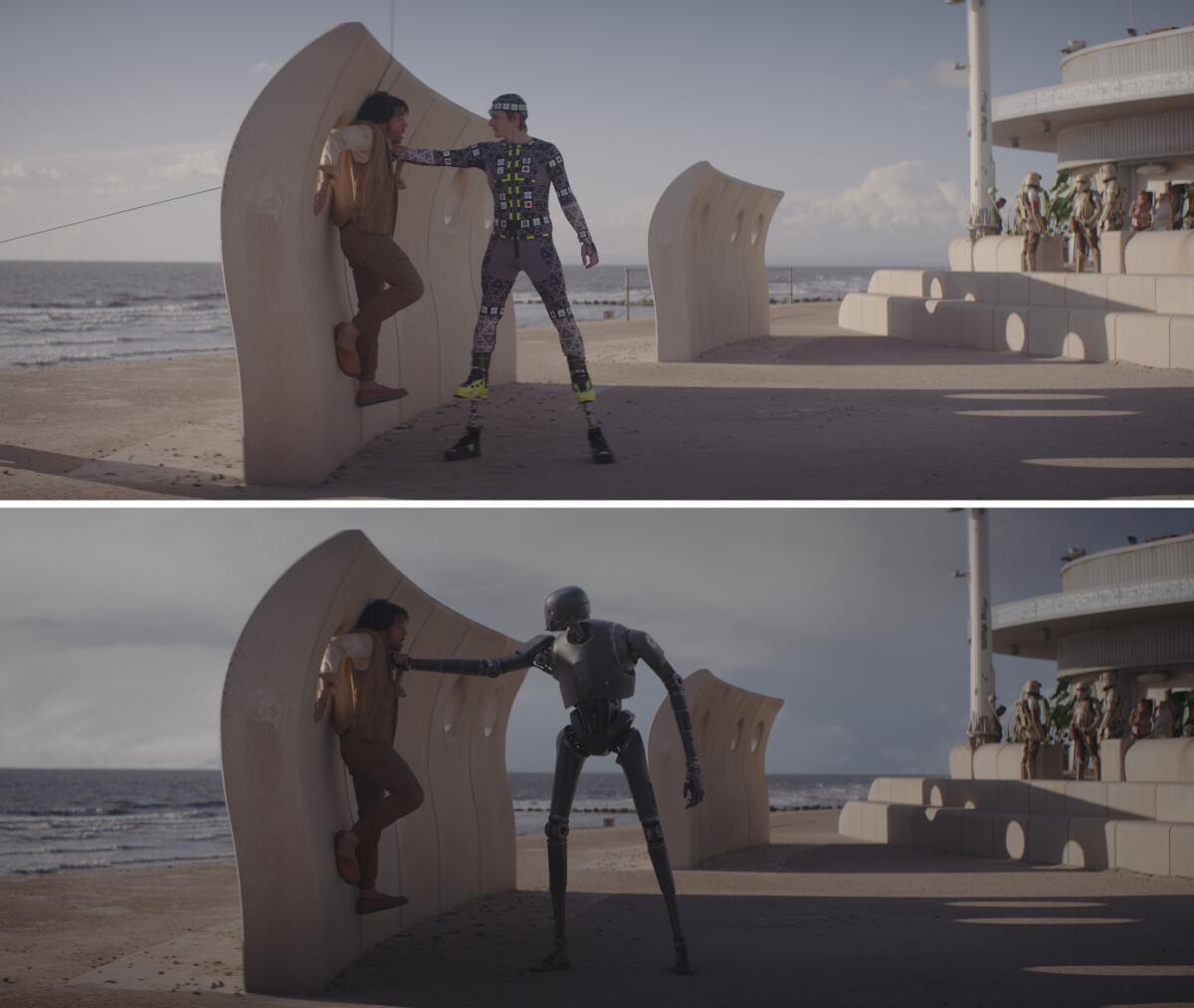Sign up for The Envelope
Get exclusive awards season news, in-depth interviews and columnist Glenn Whipp’s must-read analysis straight to your inbox.
You may occasionally receive promotional content from the Los Angeles Times.

One of the best things about “Andor” is that it doesn’t feel like “a galaxy far, far away.” Even more than its cinematic springboard, “Rogue One: A Star Wars Story,” the Disney+ show’s concerns feel ground-level, more relatable than most of the dynastic, Force-fueled, “Star Wars” saga. Instead, it’s about how an average guy and the ordinary people around him become radicalized. It’s the rare “Star Wars” story that shows how the Empire’s rule negatively affects the everyday lives of non-magical people. So although it has its spectacular sci-fi moments — giant holograms and TIE fighter chases and deadly droids and space prisons — the triumph of “Andor’s” Emmy-nominated visual effects team is how it makes such otherworldly places feel down to Earth.
“Primarily on this show, it was environments where we were taking existing photography and either extending or augmenting it,” says visual effects supervisor Scott Pritchard. “We filmed a lot in London’s Barking, which is a really interesting Brutalist architectural neighborhood that has a very distinct building style where you get a lot of pillars and balconies that jut out and create interesting shapes.
“So we chopped holes in some of these buildings [virtually] and then extended that to make the environment on Coruscant, which is this endless city planet. Through some of these holes, you might see another building that is a mile away; you can see right down to the horizon, but the horizon is just more buildings.”
In the “Star Wars” prequel films, the galactic capital Coruscant felt fantastical (and notably green-screeny in the early days of virtual environments). In “Andor,” it feels like a material place where people live and work, and with buildings that have weight and substance.

Pritchard says, “We wanted to be completely immersed in the city. We didn’t want these kind of big aerial shots, kind of, ‘Meanwhile on Coruscant,’ you know, big helicopter shots. Most things were shot at ground level as if the camera operator has the camera on their shoulder and they’re right there. We wanted to move away a bit from the prequels, which were kind of high science fiction, you know, 1950s, kind of ‘Metropolis’ style. We went more towards the Art Deco stone materials you might see in New York. Our buildings were in a variety of stone materials but not using metals to embellish them. And then using glass as a nice reflective surface.
“We had this idea to do a reflection shot for a while, just tracking [a luxury flying car] across the reflection and seeing it distort and wobble and then panning off that to a plaza. That took a long time to feel natural. Even before we started rendering, it took a long time to get the camera and the animation right, to make it feel correct and not too forced as an idea. But yeah, really happy with that shot.”
The Disney+ “Star Wars” series “Andor” manages to make alien planets feel totally real. The VFX team has been nominated for the 2023 Emmy for its deceptively detailed and imaginative work. (Courtesy of Andor, PGM, Lucasfilm, Industrial Light & Magic)
That kind of extreme attention to detail is present throughout the series and reflects how “Andor” is a product of the melding of visual effects, production design and cinematography in this filmmaking era.
“Working with the cinematography, the plate photography, we were very lucky to have some great [directors of photography] on the show who shot beautiful plates in some amazing locations around London and up in Scotland,” he says, noting the production was limited in its location options due to the pandemic. “When you have that material to work with, you’re off to a great start in terms of making something feel grounded.
“We did go to Lanzarote, one of the Canary Islands, to film some helicopter footage, to take some photogrammetry, footage of some of the volcanic terrain around there. You have this amazing black and red soil, which feels quite otherworldly as well. And that served as the basis for the planet Ferrix that we see in the first half.
“When you break it down, you can see the detail of the wire-frame models and all the work that goes into the shading and the materials by all these different artists, and then the compositing, how it all blends together — all the optical and photographic elements that go into making it look like it’s been shot by one camera.”

Many of those working on “Andor” — Pritchard very much included — are bona fide “Star Wars” geeks who trace their interest in filmmaking to those movies. As such, they couldn’t help but include some Easter eggs here and there. For instance, in the show’s amazing reveal at the end of the season involving a connection to the Death Star, Pritchard and company embedded some tributes.
“Where you see the little robots placing the ‘product’ onto the surface of the Death Star, right at the back of the shot, you see a wall. And the wall has these shapes on it which are identical to the shapes of the trench run from ‘A New Hope,’” he says of something one of the team’s artists built in on his own. “It’s a lovely detail that shows the kind of passion the [Industrial Light & Magic] artists bring to their work.
“And the Arrestor Cruiser in high orbit was an absolute treat. And not just for the fact that the Arrestor Cruiser was an original design from [one of the franchise’s first concept artists] called Colin Cantwell, who designed, along with the first X-Wing, the first Millennium Falcon and the first TIE fighter. It was May last year, Colin died very tragically. So to finally bring his design to life and give it a starring role in the series was a real treat and a real honor. If you listen to the audio, it says, ‘Arrestor Cruiser, Cantwell Class.’ ”
In a roundtable conversation, Diego Luna, Helen Mirren, Bella Ramsey, Christina Ricci, Patrick Stewart and Jeremy Strong dive deep into their appreciation of writers, mothers and “not giving a f--”
Sign up for The Envelope
Get exclusive awards season news, in-depth interviews and columnist Glenn Whipp’s must-read analysis straight to your inbox.
You may occasionally receive promotional content from the Los Angeles Times.